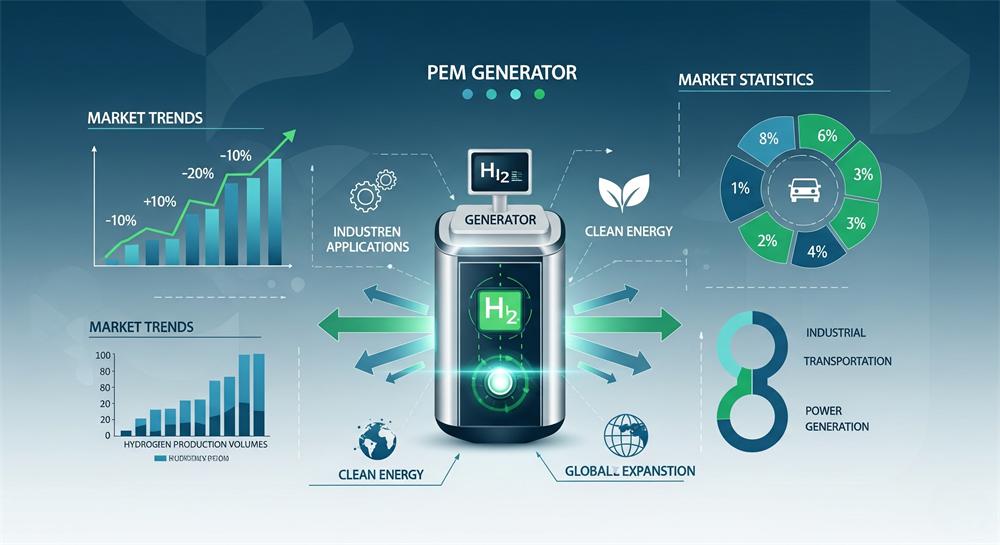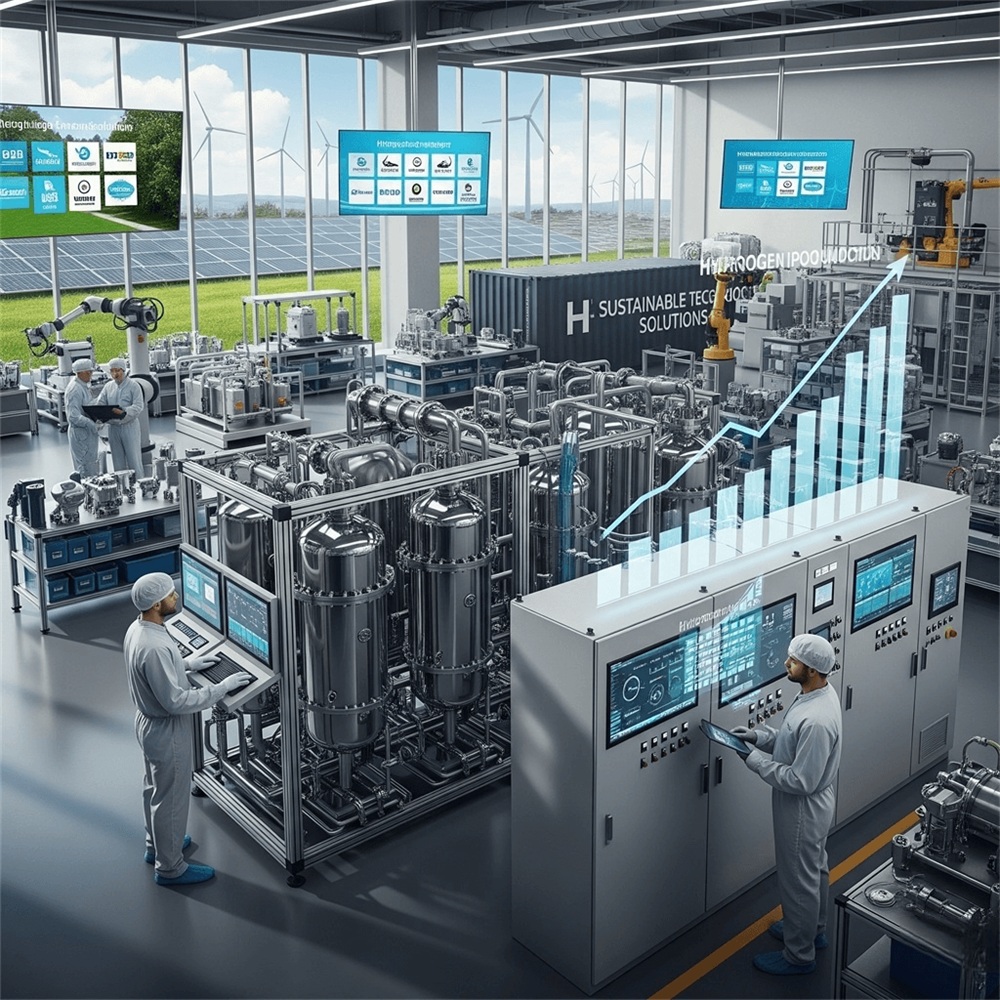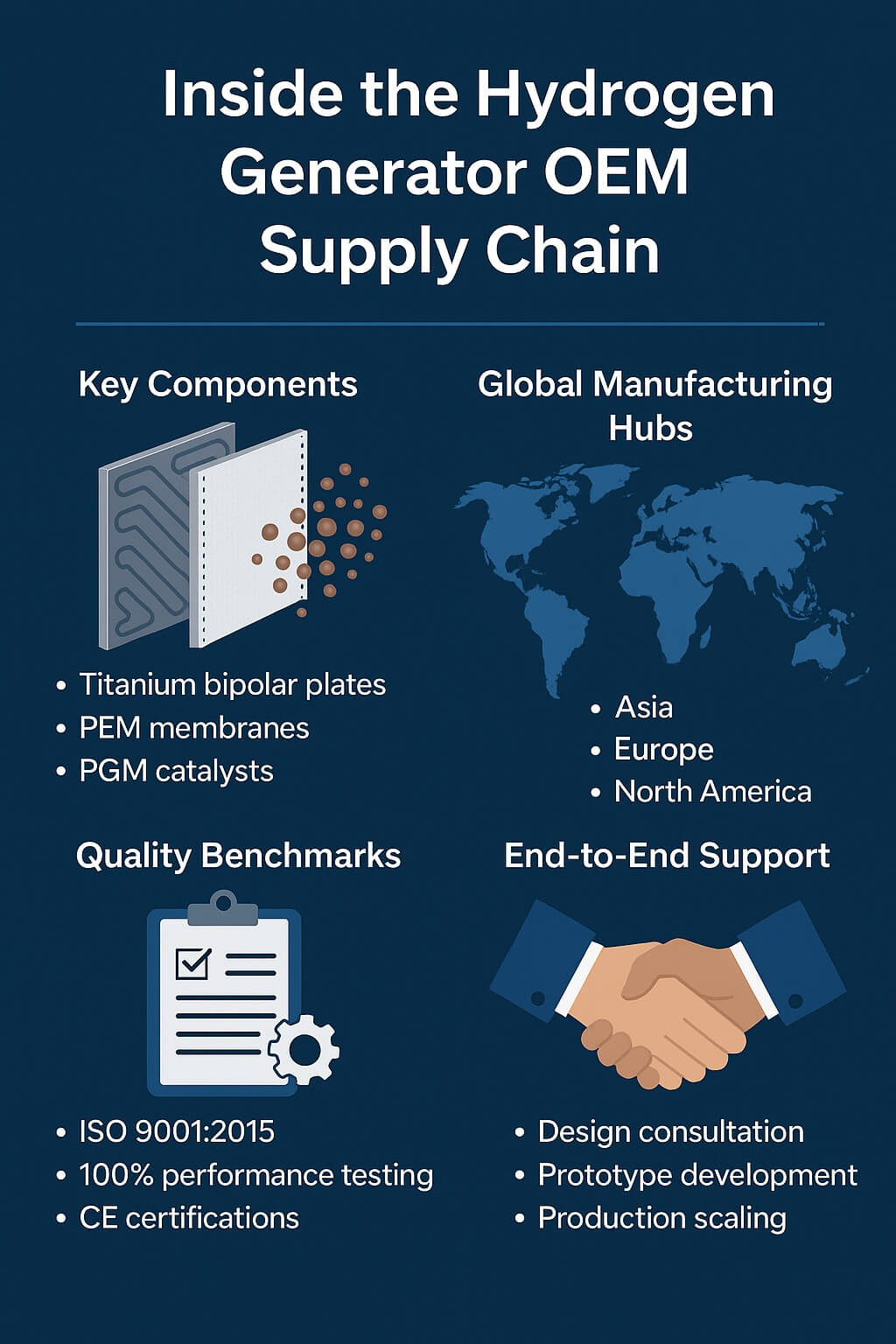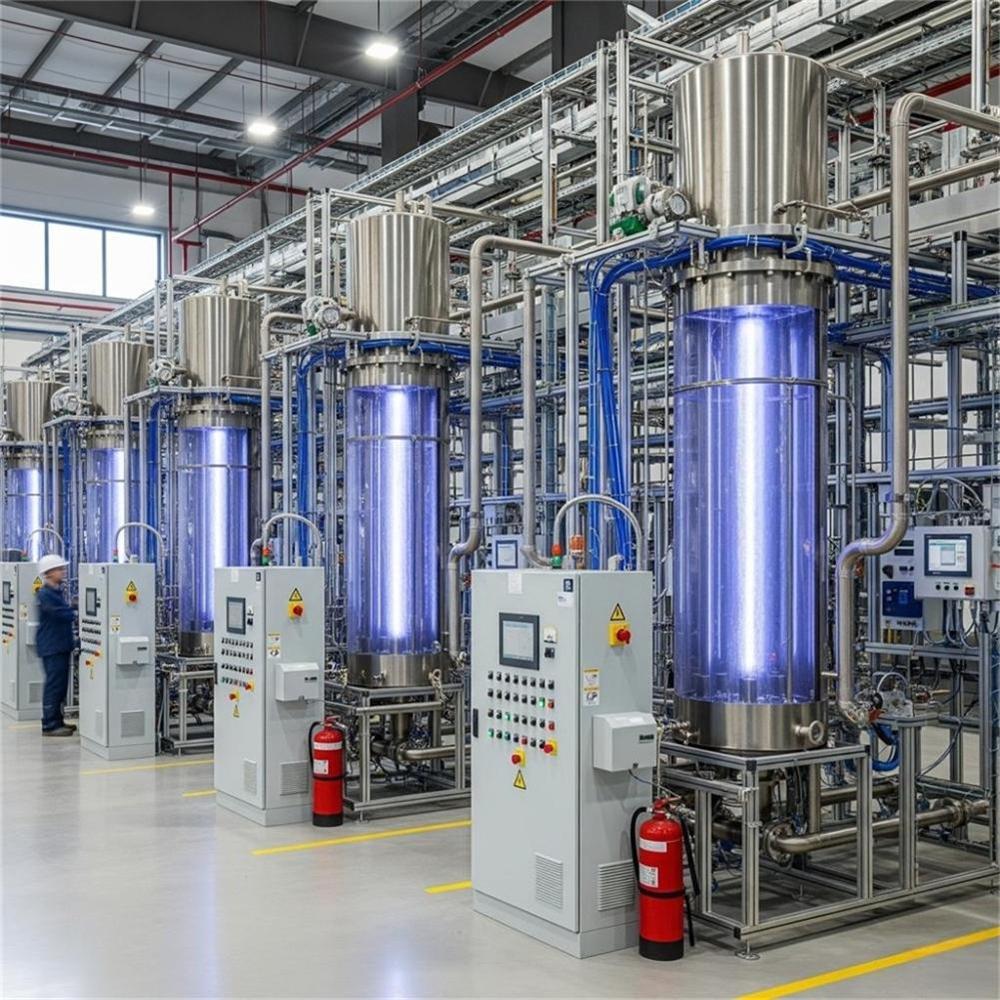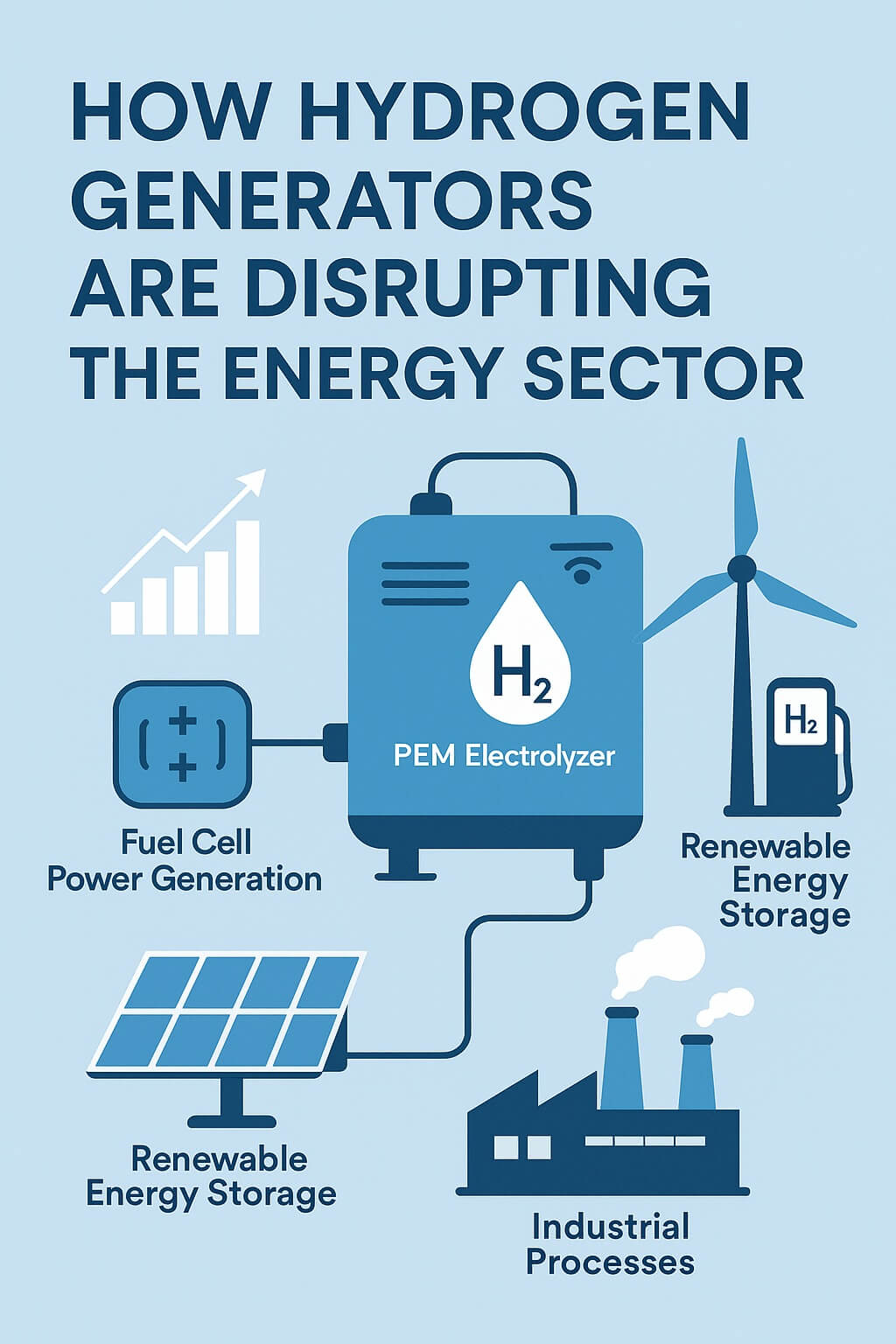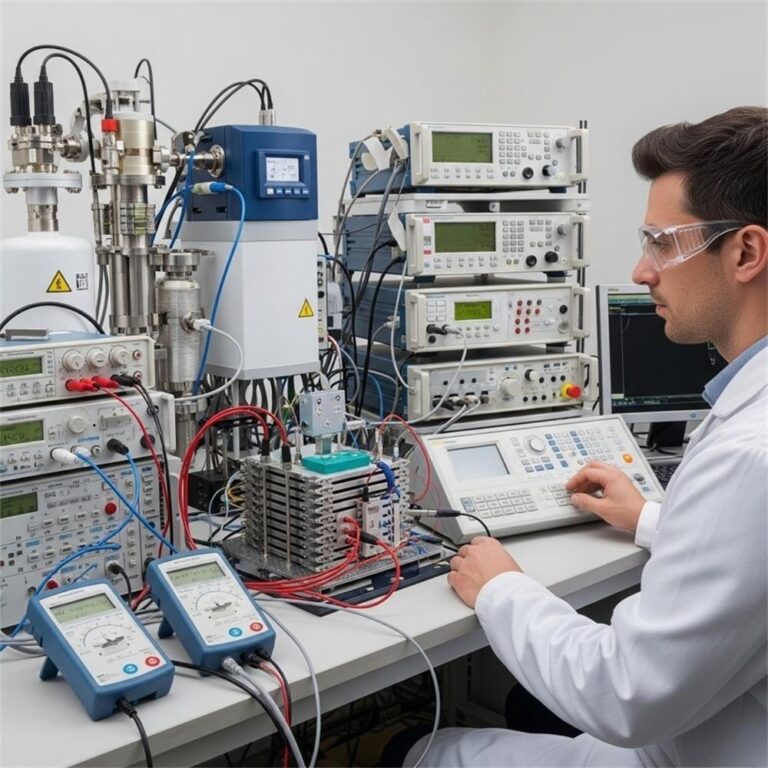Introduction
The hydrogen economy is surging at an unprecedented pace. In fact, experts predict that hydrogen could meet up to 24% of global energy demand by 2050, highlighting its pivotal role in the transition to cleaner energy sources. At the heart of this transformation are hydrogen generators—systems that efficiently produce hydrogen gas—and specifically, PEM electrolyzer stacks.
In today’s rapidly evolving industries—from transportation to energy storage—the demand for efficient, reliable, and sustainable hydrogen generation has skyrocketed. This article aims to offer a comprehensive guide to understanding PEM electrolyzer stacks, their function, key components, selection factors, and how to maintain them for long-term success.
But first, what exactly is PEM electrolysis? Simply put, PEM (Proton Exchange Membrane) electrolysis is a method of splitting water into hydrogen and oxygen using electricity and a solid polymer membrane. It’s efficient, compact, and ideal for renewable energy applications.
Components of PEM Electrolyzer Stacks
The Membrane Electrode Assembly (MEA)
At the core of any PEM electrolyzer stack lies the Membrane Electrode Assembly (MEA), where the critical water-splitting reaction takes place.
- Proton Exchange Membrane (PEM): Typically made of Nafion™, this polymer selectively transports protons (H+) while blocking gases like oxygen and hydrogen, ensuring high purity.
- Catalyst Layers: At both the anode and cathode, catalyst layers—commonly composed of platinum or iridium—facilitate the necessary chemical reactions.
- Importance: A well-designed MEA ensures high efficiency, minimizes energy losses, and extends the operational lifespan.
Bipolar Plates (Flow Field Plates)
Bipolar plates are responsible for:
- Gas Distribution: Uniformly supplying hydrogen and oxygen across the MEA.
- Electric Conductivity: Allowing electrons to travel from one cell to another.
- Heat Management: Removing excess heat to maintain optimal operation.
Materials: Titanium (high corrosion resistance), stainless steel (cost-effective), and graphite composites (good conductivity).
Flow Designs:
- Serpentine: Excellent for uniform gas distribution.
- Parallel: Low pressure drop but sensitive to blockage.
- Interdigitated: Superior mass transport but higher energy cost.
Gaskets and Seals
Gaskets play a critical role by:
- Preventing hydrogen or oxygen leaks.
- Maintaining internal pressure.
- Protecting against contamination.
Materials: Typically composed of elastomers with chemical resistance and thermal durability.
End Plates and Hardware
These components:
- Provide mechanical compression to prevent leaks.
- Maintain structural integrity during operation.
Common Materials: Stainless steel for durability or aluminum for lightweight designs.
How PEM Electrolyzer Stacks Function
The Electrochemical Process
PEM electrolysis splits water (H₂O) into hydrogen (H₂) and oxygen (O₂) using electricity:
- Anode Reaction (Oxidation): 2H₂O → O₂ + 4H⁺ + 4e⁻
- Cathode Reaction (Reduction): 4H⁺ + 4e⁻ → 2H₂
Proton Transport
Protons (H⁺ ions) migrate through the PEM from the anode to the cathode, where they combine with electrons to form hydrogen gas. Membrane hydration is crucial to maintain this conductivity.
Gas Separation
The PEM ensures hydrogen and oxygen remain separate, leading to ultra-high hydrogen purity, often exceeding 99.999%.
Factors Affecting Performance
- Temperature: 50–80°C range enhances efficiency.
- Pressure: Higher pressure increases production rates.
- Current Density: Balancing current ensures both performance and lifespan.
Selection Criteria for PEM Electrolyzer Stacks
Hydrogen Production Capacity
Evaluate:
- Production Rate: Measured in Nm³/h (normal cubic meters per hour).
- Application: Residential units require smaller stacks; industrial processes demand larger capacities.
Efficiency and Energy Consumption
Higher efficiency translates to lower operating costs:
- Energy Consumption: Ideal ranges from 50–60 kWh/kg of hydrogen.
- Optimization: Design and operating conditions significantly impact energy use.
Durability and Lifespan
Durability ensures reduced maintenance and replacement costs:
- Common Issues: Membrane thinning, catalyst degradation.
- Tests: Accelerated aging protocols predict real-world performance.
Cost
Understand both:
- Initial Costs: Related to materials and manufacturing complexity.
- Operating Costs: Electricity, water, and maintenance.
Safety Features
Modern PEM electrolyzers include:
- Leak Detection Systems
- Overpressure Valves
- Automatic Shutdown Mechanisms
Integration with Power Sources
Renewable Energy Integration
PEM electrolyzers are ideal for renewable energy:
- Solar and Wind: Manage intermittency via hydrogen storage.
- Success Stories: Projects like ITM Power’s REFHYNE demonstrate scalable renewable hydrogen production.
Grid Connection
Direct connection to the grid enables:
- Flexible operation during off-peak hours.
- Maximizing low-cost electricity opportunities.
Power Electronics
Converters and inverters optimize the match between the power source and stack requirements, improving overall system efficiency.
Maintenance Tips
Water Quality
Use high-purity, deionized water:
- Prevents mineral buildup.
- Protects MEA from contamination.
Regular Inspections
- Check for Leaks: Visual and sensor inspections.
- Monitor Performance: Watch for declining hydrogen output or increased energy consumption.
Membrane Hydration Management
- Humidification Systems: Maintain ideal moisture levels.
- Avoid Dry-Outs: Prevent permanent damage to the PEM.
Stack Cleaning
Routine cleaning:
- Removes contaminants.
- Enhances longevity.
Use only manufacturer-approved cleaning agents.
Conclusion
PEM electrolyzer stacks are truly the engine behind today’s most advanced hydrogen generators. Understanding their components, functions, selection criteria, and maintenance practices is essential to leveraging their full potential.
As innovations continue to drive costs down and efficiency up, PEM technology promises to play a starring role in achieving a carbon-neutral future.
💬 Curious about how PEM electrolyzers can revolutionize your operations? Contact us today to learn more about cutting-edge hydrogen generator solutions!
FAQs About PEM Electrolyzer Stacks and Hydrogen Generators
Q1. What is a PEM electrolyzer stack?
A PEM electrolyzer stack is a series of membrane-based cells that split water into hydrogen and oxygen using electricity, forming the core of hydrogen generators.
Q2. How efficient is a PEM electrolyzer?
Typically, PEM electrolyzers achieve 60–80% energy efficiency, depending on operating conditions and design.
Q3. What type of water is used in PEM electrolyzers?
Only high-purity, deionized water should be used to avoid damaging the proton exchange membrane.
Q4. How long does a PEM electrolyzer stack last?
Under optimal conditions, modern PEM stacks can operate for over 40,000 hours, which translates to several years of continuous use.
Q5. Can a PEM electrolyzer run on solar power?
Absolutely! PEM electrolyzers are ideal for coupling with solar panels or wind turbines for sustainable hydrogen production.
Q6. Why is proton transport important in PEM technology?
Efficient proton transport ensures high hydrogen output, optimal energy efficiency, and minimal gas crossover.

